Yangon, Myanmar, 2003
Photograph by Maria Stenzel
Worshippers』 candles illuminate the Shwedagon Paya, a gilded Buddhist pagoda that rises almost 330 feet (100 meters) in central Yangon (Rangoon), Myanmar (Burma).
The temple, with its glittering spires and stupas, was immortalized by Rudyard Kipling in his Letters from the East.
(Photo shot on assignment for, but not published in, "Blood, Sweat, and Toil Along the Burma Road, " November 2003, National Geographic magazine)
信徒們點燃的蠟燭照亮了瑞光大金塔,這是一座高達330英尺(100米)的鍍金佛塔,位於緬甸仰光的中心。轉載翻譯部分請註明天涯東方豬。這座有著金光閃閃的尖頂和佛塔的寺院,因出現在魯德亞德·吉卜林(Rudyard Kipling)所著的《東方書信》中而名垂千古。
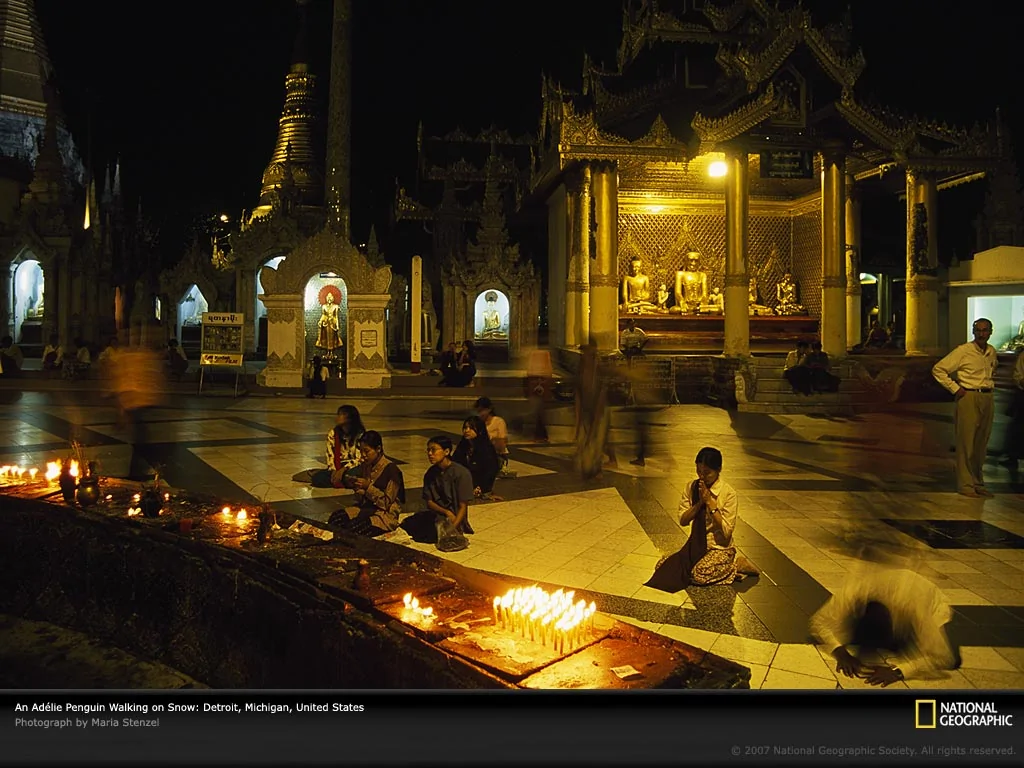 |
2007-08-12
Hawaii, 2005
Photograph by Susan Seubert
Suntanned patrons at the patio bar of Halekulani Hotel’s House Without a Key restaurant enjoy stunning sunset views and a hula show on Oahu Island’s Waikiki Beach.
The swaying hips and undulating arm movements of a hula dancer imitate the waves that wash over Hawaii’s shores. Hula went underground for about 60 years in the early 19th century after Christian missionaries persuaded rulers to ban the provocative dance. It is enjoying a resurgence today.
(Photo shot on assignment for, but not published in, "Aloha Again, " January/February 2005, National Geographic Traveler magazine)
在瓦胡島的懷基基海灘上哈蕾柯蘭妮酒店中,曬得黝黑的遊客們正在無鑰之屋餐館(House Without a Key)的露天吧里欣賞美妙的夕陽景色和草裙舞表演。轉載翻譯部分請註明天涯東方豬。草裙舞者搖擺著臀部,手臂如波浪起伏般運動,這些動作是在模仿沖刷著夏威夷岸邊的海浪。19世紀初期,當時基督傳教士說服統治者禁止了這種挑逗性的舞蹈,此後將近60年的時間裡,草裙舞不得不在地下進行。如今,其已捲土重來。
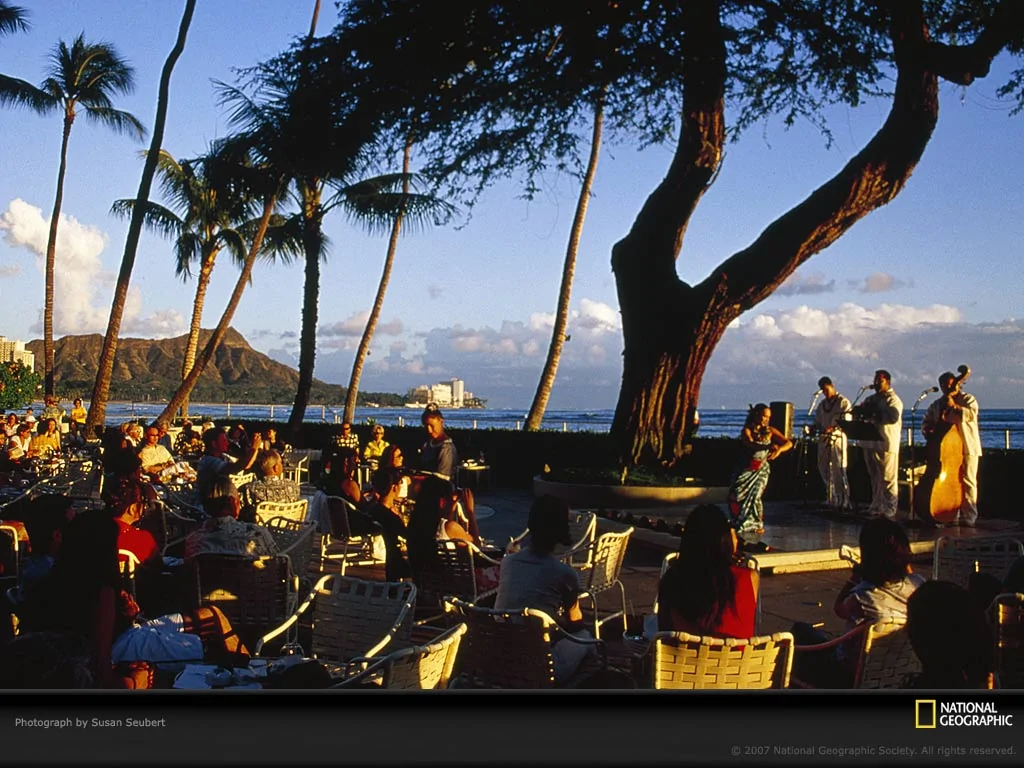 |
2007-08-13
Peru, 1981
Photograph by Steve Raymer
Three vicuñas graze in tall grass in Peru’s Pampa Galeras Reserve.
Prized for their soft, fine wool, vicuñas had been hunted to near-extinction by the late 1960s. Government protections in Peru, Bolivia, Argentina, and Chile, and international trade restrictions on vicuña wool have helped the species rebound. Despite a continued threat from poachers, they are now considered at low risk for extinction.
(Photo shot on assignment for, but not published in, "Wild Cargo: the Business of Smuggling Animals," March 1981, National Geographic magazine)
三隻小羊駝(vicuñas)正在秘魯的潘帕伽勒拉斯保護區的草叢裡覓食。小羊駝的皮毛柔軟順滑,非常珍貴。到上世紀六十年代末期,幾乎被捕獵殆盡。轉載翻譯部分請註明天涯東方豬。秘魯,玻利維亞,阿根廷和智利等國政府對其採取了保護行動,國際貿易上對小羊駝毛交易也進行了限制,以助於該物種的回升。儘管小羊駝持續受到偷獵者的威脅,但目前認為其滅絕的風險已經較低。
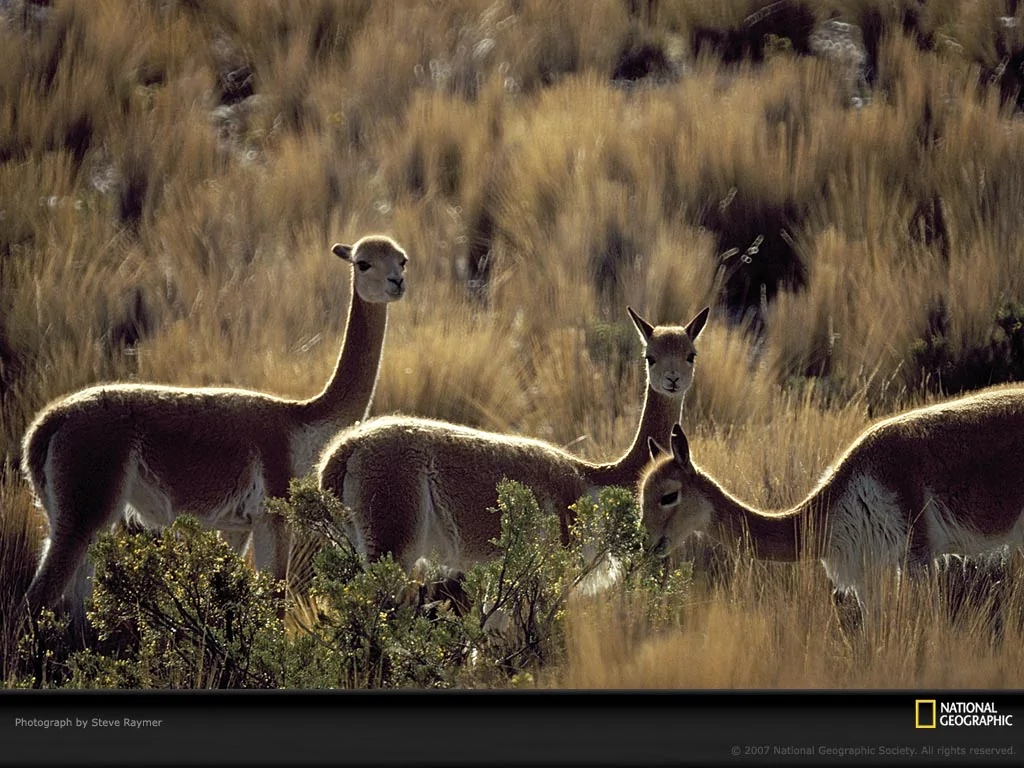 |
2007-08-14
Mexico, 1999
Photograph by Jonathan Tourtellot
A large stone cross welcomes visitors to the San Ignacio Mission church near Creel, Mexico.
The church, built by Jesuits in the 1700s, is often used by the region’s Tarahumara Indians as a gathering place and a market to sell their handicrafts to tourists.
(Photo shot on assignment for, but not published in, "The Two Faces of Tourism," July/August 1999, National Geographic Traveler magazine)
在墨西哥克雷厄爾附近的聖伊格納西奧教會門前,一座巨大的石制十字架迎接著來訪者。這座教堂在十八世紀由耶穌會士所建,現成為當地的塔拉烏馬拉印第安人聚集的場所和向遊客兜售手工藝品的市場。
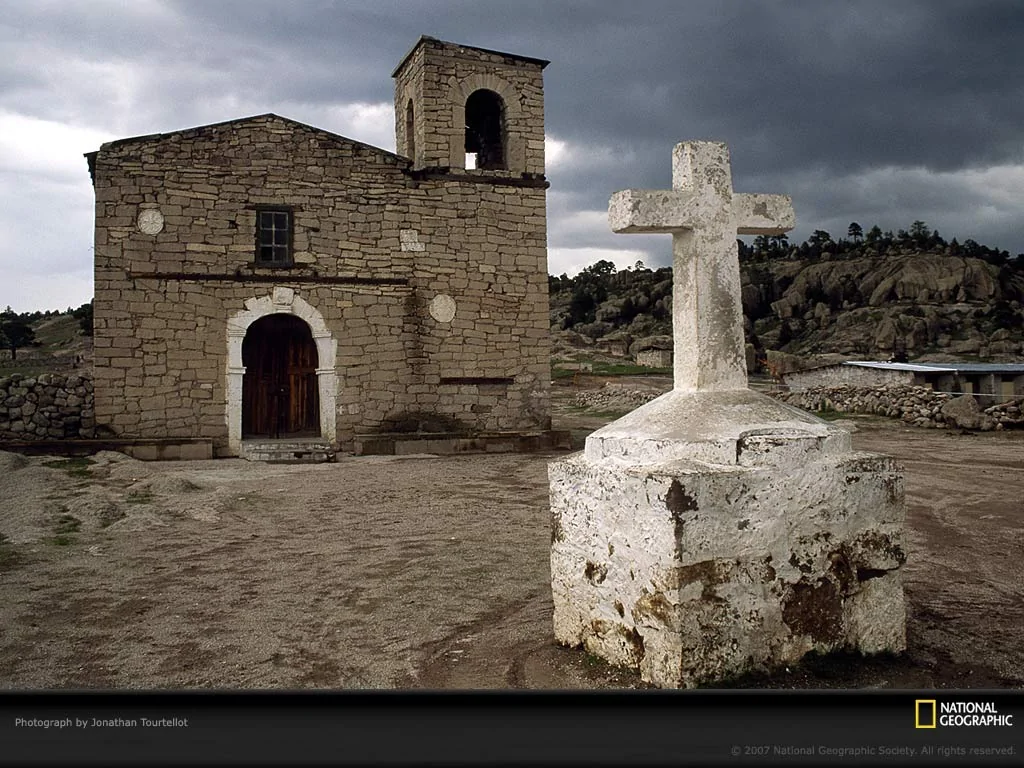 |
2007-08-15
Vestmannaeyjar, Iceland, 1999
Photograph by Sisse Brimberg
Campers await the start of a raucous national day festival in the town of Vestmannaeyjar on Iceland’s Heimaey Island.
Held every year on the first weekend in August, this three-day outdoor festival began in 1874, when bad weather kept residents from traveling to the mainland to celebrate Iceland’s new status as a republic. They held a celebration of their own, and the rest is history.
(Photo shot on assignment for, but not published in, "In Search of Vikings," May 2000, National Geographic magazine)
在冰島的赫馬島上的韋斯文尼查(Vestmannaeyjar)鎮,露營者們正在等待一個紛亂的國慶節慶祝活動開始。轉載翻譯部分請註明天涯東方豬。這個為期三天的戶外節日在每年八月的第一個周末舉行,起始於1874年,當時的惡劣天氣使得當地居民無法奔赴大陸慶祝冰島成為共和國。於是他們就自己舉辦了慶祝活動,並一直延續至今。
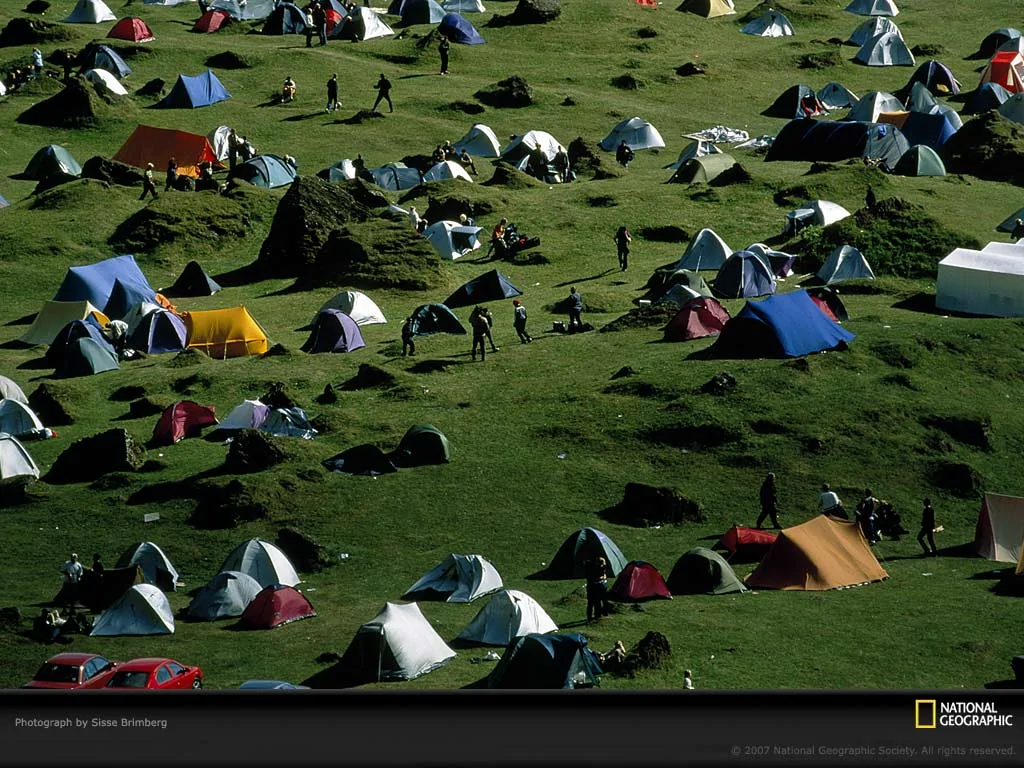 |
2007-08-16
Yemen, 2005
Photograph by George Steinmetz
Clad in black abayas and sun-shielding straw hats called nakhls, women work the fields in central Yemen’s Wadi Hadramawt, an oasis on the southern periphery of Arabia’s Rub al Khali, or Empty Quarter. Occupying a fifth of the Arabian Peninsula, the Rub al Khali is the world’s largest sand sea.
(Text adapted from and photo shot on assignment for, but not published in, "Empty Quarter: Exploring Arabia’s Legendary Sea of Sand, " February 2005, National Geographic magazine)
在葉門的瓦地哈達拉馬瓦杜(Wadi Hadramawt)中部,身穿黑色阿拉伯長袍頭戴一種叫做nakhls的遮陽草帽的婦女們正在田間幹活. 這裡是阿拉伯半島上的魯布哈利(Rub al Khali)沙漠南部邊上的一塊綠洲,這片沙漠又稱為空域(Empty Quarter).魯布哈利是世界上最大的沙海,占據了阿拉伯半島五分之一的面積.
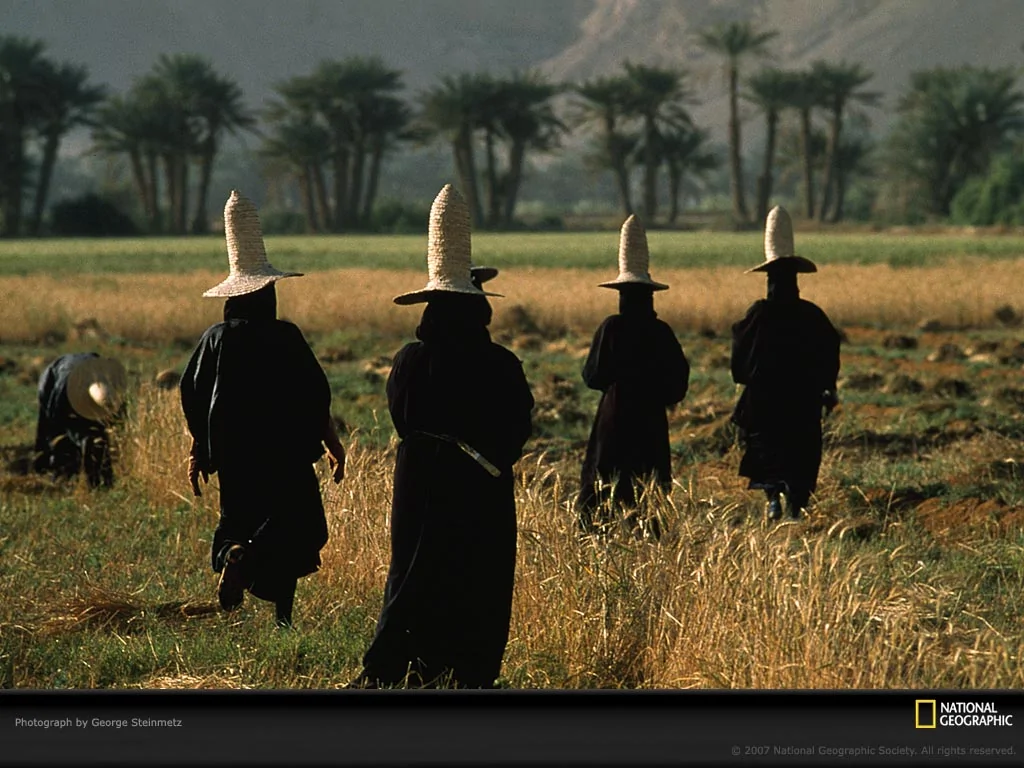 |
2007-08-17
India, 1996
Photograph by Cary Wolinsky
A washerwoman hangs diaphanous saris to dry on the mortared walls of a house in India. India’s enormous labor pool allows even middle-class households there to employ home help, including servants, cooks, and washerwomen.
(Photo shot on assignment for, but not published in, "The Quest for Color," July 1999, National Geographic magazine)
印度的一名洗衣婦正在一座粉刷過的房子前晾曬著精美的莎麗(一種主要由印度或巴基斯坦婦女穿著的外套)。印度有著巨大的勞動力資源,這使得連那裡的中產階級家庭都有僱傭如僕人,廚師和洗衣婦等家務工人的能力。
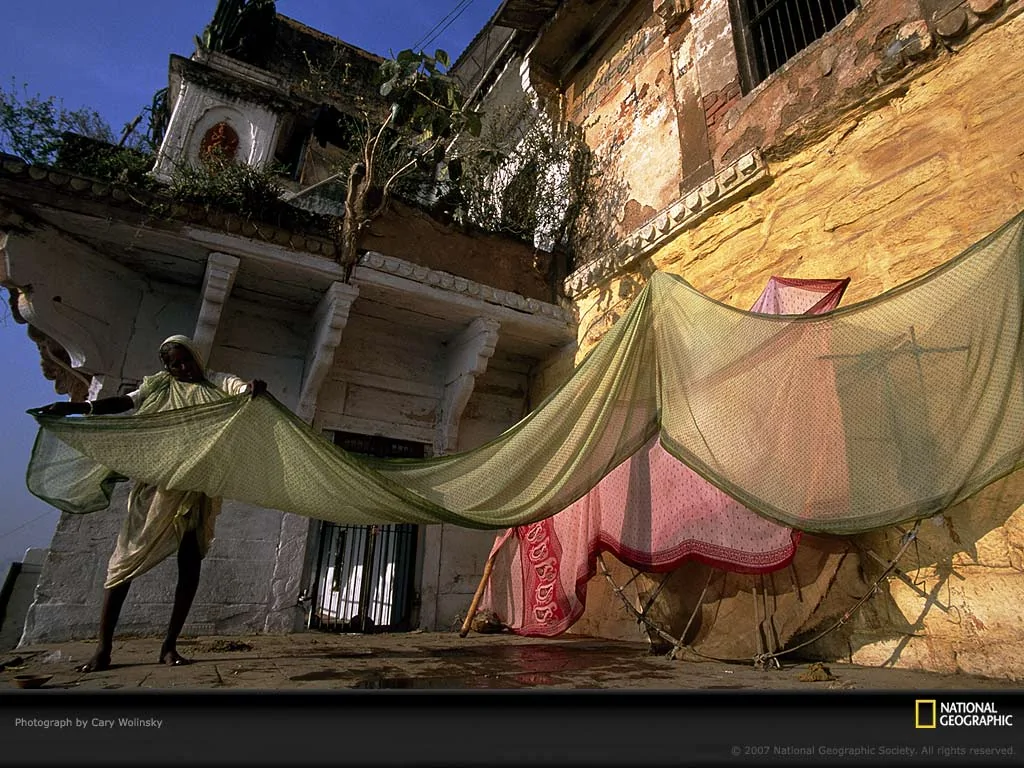 |
2007-08-18
Arizona, 2007
Photograph by Michael Nichols
A time-lapse photo reveals a smattering of stars dotting the sky above Grand Canyon National Park in Arizona.
The landscape that today attracts more than four million tourists was once home to many indigenous peoples, including the Hisatsinom, or Anasazi. They and others survived by growing cotton, corn, beans, and squash along the sandy banks and terraces of the Colorado River some 1,300 years ago.
(Text adapted from and photo shot on assignment for, but not published in, "The Unexpected Canyon," January 2006, National Geographic magazine)
這張間隔拍攝照片顯示出一些點綴在亞利桑那州大峽谷國家公園上空的星星。這片每年吸引著超過四百萬名遊客的土地曾經是許多土著民族的故土,包括"Hisatsinom"即阿納薩齊印第安人。轉載翻譯部分請註明天涯東方豬。在大約1,300年前,他們和其他民族在科羅拉多河兩旁多沙的河岸和梯田上種植棉花,玉米,豆類和南瓜,以此謀生。
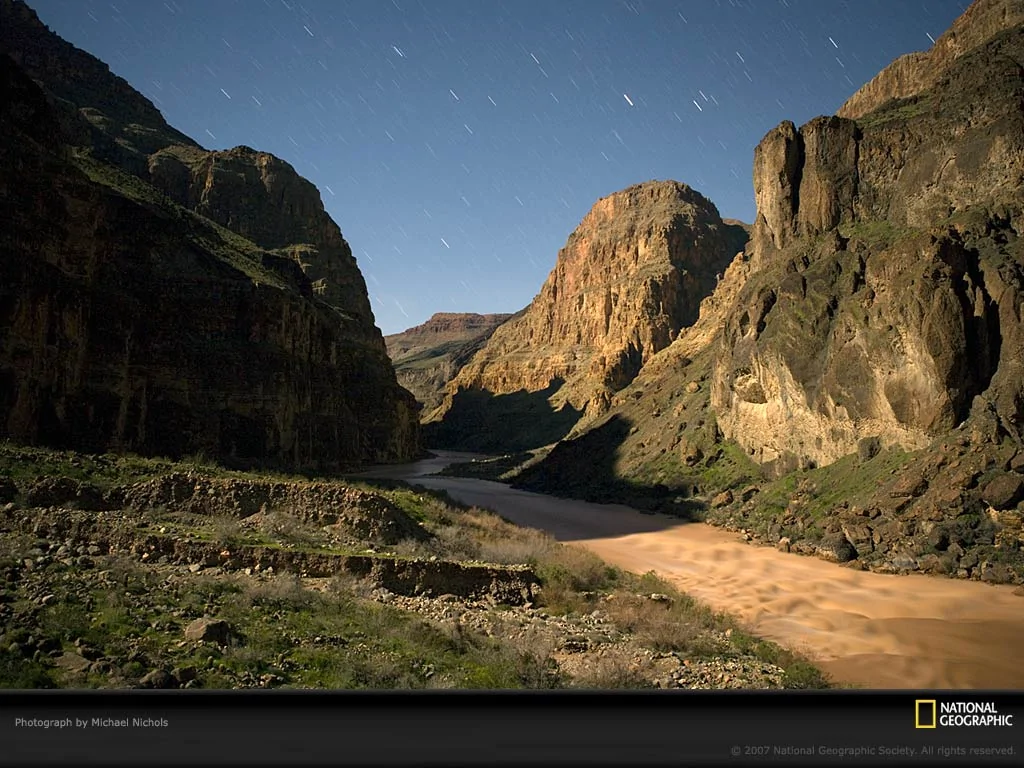 |
2007-08-19
Missouri, 1988
Photograph by James P. Blair
A tree gleams yellow in the sunlight in the Seiwa-en Japanese garden at the Missouri Botanical Garden. At 14 acres (5.6 hectares), it is the largest traditional Japanese garden in the United States. Its creator, Koichi Kawana, describes it as a place of "pure, clear harmony and peace."
(Photo shot on assignment for, but not published in, "The Plant Hunters: Portrait of the Missouri Botanical Garden," August 1990, National Geographic magazine)
在密蘇里植物園中的清和園裡,一棵樹在陽光下放出微微的黃光。這座花園占地14英畝(5.6公頃),是美國最大的傳統日本花園。轉載翻譯部分請註明天涯東方豬。其設計者川名幸一對這裡的描述是「純淨,明朗諧調,平和」。
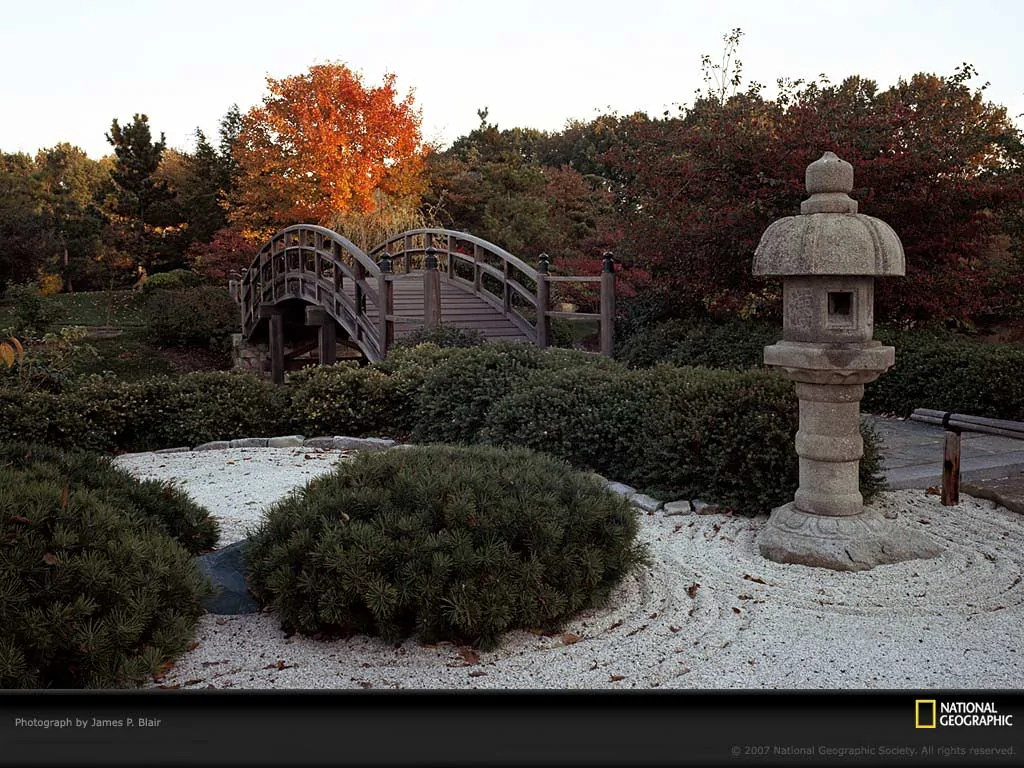 |
2007-08-20
New Hampshire, 1981
Photograph by Sandy Felsenthal
Steam and sulfides billow from the James River Corporation pulp and paper mill on the Androscoggin River in Berlin, New Hampshire. The plant opened in 1853 as a sawmill and quickly grew into one of the foremost chemical pulp mills in the world.
(Text adapted from and photo shot on assignment for, but not published in, "Contrary New Hampshire," December 1982, National Geographic magazine)
在新罕布夏州的柏林,位於安德羅斯科根河旁的詹姆斯河公司的製漿造紙廠向外排放著滾滾的含有硫化物的蒸汽。轉載翻譯部分請註明天涯東方豬。這個工廠成立於1853年,最初為一個鋸木廠,後來迅速成長為世界上最重要的化學製漿造紙廠之一。
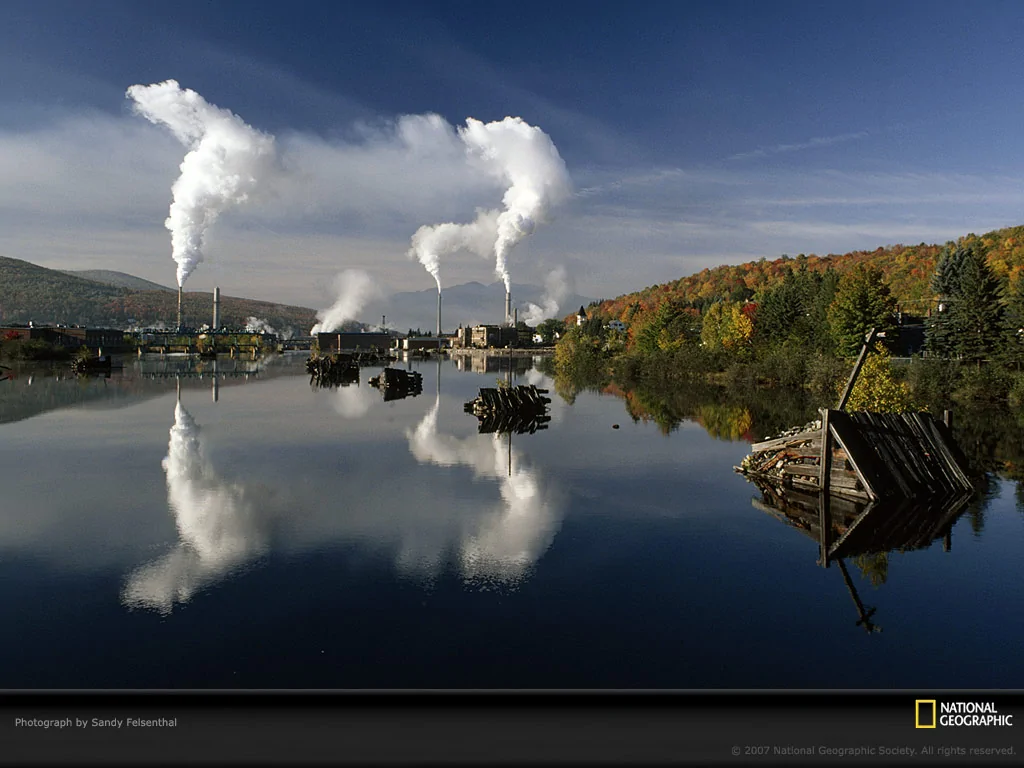 |



















